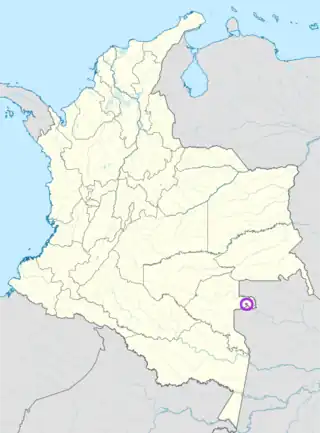| Pisamira | |
|---|---|
Tucanoan
| |
| Language codes | |
| ISO 639-3 | None (mis) |
| Glottolog | pisa1245 |
 | |
Pisamira is a Tucanoan language. Ethnologue misidentifies it as a dialect of Tucano.[1]
Phonology
Pisamira features six vowels /a e i ɨ o u/ which can be either oral or nasal, and eleven consonant phonemes.[2] A few of these consonants /g, t͡ʃ, r/ have a restricted distribution and rarely or never appear at the beginnings of roots.[3]
| Labial | Apical | Palatal | Velar | Glottal | ||
|---|---|---|---|---|---|---|
| Stops | voiceless | p | t | k | ||
| voiced | b | d | g | |||
| Continuants | ʋ | ʝ | h | |||
| Affricates | t͡ʃ | |||||
| Trills | r | |||||
References
- ↑ Hammarström (2015) Ethnologue 16/17/18th editions: a comprehensive review: online appendices
- ↑ González de Pérez, María Stella (2000). Bases para el estudio de la lengua pisamira. Instituto Caro y Cuervo.
- ↑ Preciado, Rodríguez; Patricia, Iveth (2018-02-28). "Aspectos de la morfología nominal y verbal de la lengua pisamira : una lengua de la familia tucano oriental del noroeste amazónico" (in Spanish).
{{cite journal}}: Cite journal requires|journal=(help)
This article is issued from Wikipedia. The text is licensed under Creative Commons - Attribution - Sharealike. Additional terms may apply for the media files.